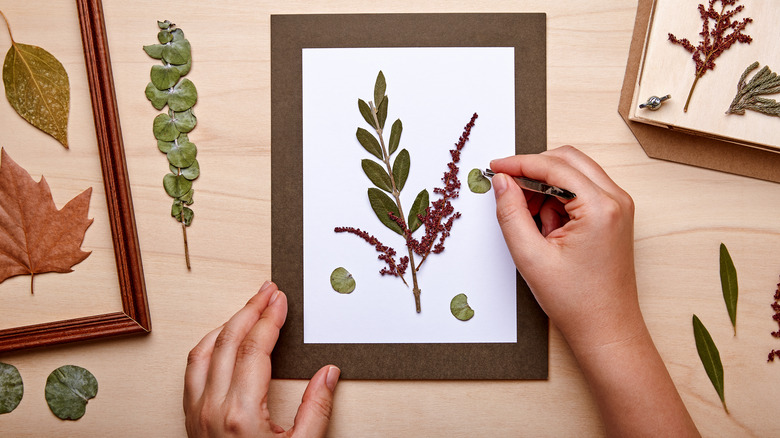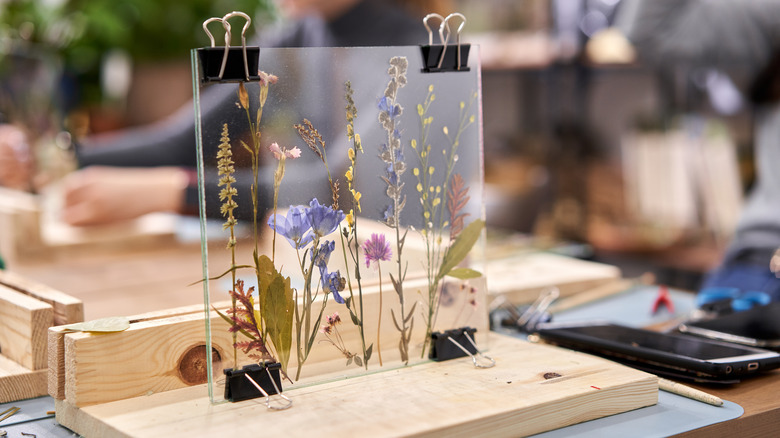Herbariums: What They Are And Why You Might Want One
A herbarium is a collection of plant specimens that are carefully arranged and preserved usually on paper pages. The main purpose of having a herbarium is to keep a record of plants for future study, so they're typically put together by universities and other official bodies, but building them can also be a nice hobby to take on. It provides a hands-on learning opportunity for people of all ages and can be used to create DIY art pieces for the home. On an episode of "Fixer Upper: The Hotel," Joanna Gaines shared her thoughts on plant collection as a personal project. As she said on Instagram, "Everyone should do this as a hobby because you're preserving nature in its most beautiful form."
This YouTube video by the New York Botanical Garden provides a simple tutorial for a DIY herbarium. You'll need hand pruners or scissors, zip lock bags, a cutting board, 2 hardcover books, paper towels, newspapers, 2 pieces of cardboard bigger than the newspapers, waterproof ink pens, acid-free paper, and your phone. Before you dive in and start gathering plants though, find out if you need a collection permit first. Do this by contacting any U.S. Department of Agriculture Forest Service District Office in your region.
Why you might want a herbarium
First and foremost, herbaria are essential for the field of botany. Having records that help identify and classify plant species can go a long way in plant science because they contribute knowledge that can help researchers and scientists, with amateurs often making valuable contributions. One valuable aspect of this knowledge is the diversity of plant species in specific regions and over time. This information can help in understanding trends and changes related to the overall biodiversity in an ecosystem.
If you love caring for and learning about plants, herbaria are great educational tools on a personal level. Creating them can also be a fun assignment or project for kids and school students of various ages who are learning about plants and biology. Herbaria can double as art to display in your home, because they were thoughtfully made using pieces that mean something to you. Whether this is because you're using local plant species or just those you personally like, they can be truly meaningful and unique art pieces.
Herbarium decoration and storage
After cutting, pressing, and drying the plants, label them with all the necessary information like their scientific name, collection date, and location. Now, you can choose to store them away or use them as decor. You can hang them up as they are, although they won't last long being left out in the atmosphere like that, so it's better to frame them. This helps preserve the plant specimen and gives you a lot of style flexibility due to the various framing options out there. One unique way to display your dried plants is to put them in a vase or mason jar filled with baby oil. It will act as a preservative and maintain their appearance. You can also use pressed plants as models for paintings that you can do yourself and then hang up.
By creating herbaria, you get to enjoy the beauty of the plants while keeping them safe in storage. You also get two fun projects in one! When storing them away as a collection, keep them in folders and place them in airtight cabinets; herbaria should be stored in a safe and weather-controlled environment to protect them from pests, temperature or humidity damage, and major disasters like flooding. It helps to label the folders alphabetically when storing multiple plants, to keep them organized and easy to navigate. Whenever you bring out your pressed plants or move them, handle them very carefully to reduce damage so they can last a long time.

